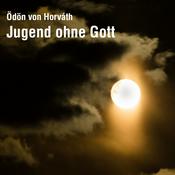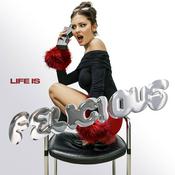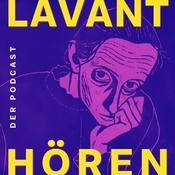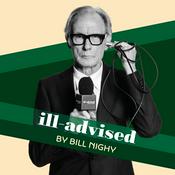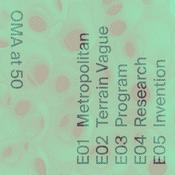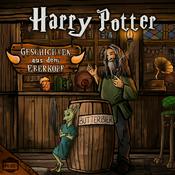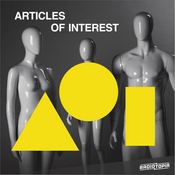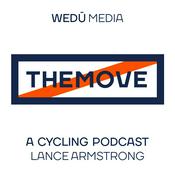Verfügbare Folgen
5 von 327
- Eric Lin and Lyle Vincent tell a tragic story in RosemeadThe Cinematography Podcast Episode 337: Eric Lin and Lyle Vincent Rosemead tells the tragic, true story of Irene (Lucy Liu), a terminally ill single mother, and her son, Joe (Lawrence Shou). As Joe battles schizophrenia and urges toward violence, Irene is left isolated from her Chinese American community in Southern California, facing impossible choices without a safety net. After decades behind the camera, director Eric Lin connected deeply with the personal nature of Rosemead. He grew up in Southern California and frequently visited the San Gabriel Valley, where the film takes place. Producer Mynette Louie, who he'd know since NYU Film School, sent him the script, and Eric decided to take it on as his first directorial feature. “I've shot a lot of features and I've been side by side with directors, watching how difficult it is to make a feature,” he says. “The thing that sort of lured me into the director's chair was that it's a story that I felt like I'd never seen before on screen.” Recognizing the film's nuanced demands, Eric knew he didn't want to pull double duty as cinematographer. Instead, he asked Lyle Vincent, another NYU alum with whom he shared a cinematic shorthand. “Knowing what a DP does, especially on a film like this, where I felt like I had to be so present, that would be a fatal mistake,” Eric explains. Lyle appreciated the trust, describing Eric as a director who “is extremely visual and who has amazing visual references and language.” Together the two shotlisted and discussed each scene emotionally and visually. To capture the film's emotional landscape, Lyle chose a subjective camera style. Handheld camerawork and portrait lenses help mirror Joe’s psychological state and the looming sense of danger. Using E-series anamorphic lenses, he created a shallow depth of field that softened the background, forcing the viewer’s focus onto the characters. This gritty reality contrasts sharply with Joe’s memories of the idyllic time he spent with his parents in a hotel. His flashbacks are rendered in warm tones, evoking a surreal, dreamlike nostalgia. See Rosemead in theaters. Find Eric Lin: Instagram @holdtheframe Find Lyle Vincent: Instagram @lylevincent SHOW RUNDOWN: 01:38 Close Focus 13:20-01:03:54 Interview 01:04:13 Short ends 01:13:09 Wrap up/Credits The Cinematography Podcast website: www.camnoir.com YouTube: @TheCinematographyPodcast Facebook: @cinepod Instagram: @thecinepod Blue Sky: @thecinepod.bsky.social--------1:15:22
- Alice Brooks, ASC returns to Oz in Wicked: For GoodThe Cinematography Podcast Episode 336: Alice Brooks, ASC For cinematographer Alice Brooks, ASC, shooting both Wicked and Wicked: For Good concurrently was a huge feat. The giant sets, precise camerawork and complex, live lighting cues for the musical numbers required detailed planning and prep. But first, Alice and her long-time collaborator, director Jon M. Chu, broke down the scripts and discussed the emotional intentions for each scene. “When we first start talking about a movie, we talk about emotion,” says Alice. “I love getting an emotional cue for the camera the same way an actor would. What is the emotional intention in the scene? An actor gets to tell the story through their breath and through their looks and through their being. And I get to tell the story, the emotional story, through camera and lenses and lighting.” Separation, seclusion and surrender were the emotional themes in Wicked: For Good. “It became very clear that the first movie would live in this ever-present daylight,” explains Alice. “And the second movie would have this weight and complexity and maturity and density to it and live in the shadows.” 90% of Wicked takes place in the daytime, with the sun setting as Elphaba (Cynthia Erivo) embraces her power, sings “Defying Gravity” and flies away. In contrast, Wicked: For Good takes place mostly at night, in the shadows, forest, and underbelly of Oz while Elphaba is in hiding. Alice chose to frame the characters Glinda and Elphaba in contrasting ways for the story. Now separated from Elphaba, Glinda (Ariana Grande) is central to the world of Oz. Alice kept her center punched, carefully composed and choreographed. Elphaba is framed always to the right or left, with tight close-ups and static hand-held shots, to emphasize her loneliness. When the two are together, Alice repeated the same motifs from the first movie, with Ephaba framed to the right and Glinda to the left, often holding hands. Though Wicked: For Good is a huge fantasy movie, Alice and the production crew tried to do as much practically and in camera as possible. The “Girl in the Bubble” dance sequence was done entirely with carefully choreographed mirrors and flyaway walls that were removed as Glinda dances. Alice planned it out using her daughter's bath toys and her husband's shaving mirror. The art department storyboarded it, then the special effects team was able to figure out all the mirror technology needed to pull it off. The camerawork had to be very precise, with many of the frames exactly matching the last, combining both a Technocrane and a Steadicam. Unreal Engine was an indispensable tool for Alice to aid the film's sophisticated lighting and shot design. She used the software to pre-visualize outdoor sets, making sure the sun was at the right angle for perfectly backlighting Glinda in her bubble over Munchkin Land. It also helped her discover where the sun would hit tall buildings and spires of the Emerald City. Unreal assisted with pre-lighting, finding where practical light sources could be integrated and built into interior sets. She even tested different camera lenses to see how they would look in the space under certain lighting conditions and at various angles and heights. Alice is the cinematographer for the upcoming animated Spiderman: Beyond The Spider-verse as well as an animated version of the Dr. Seuss book, Oh The Places You'll Go with director Jon M. Chu. See Wicked: For Good in theaters. Find Alice Brooks: Instagram @_alicebrooks_ SHOW RUNDOWN: 01:22 Close Focus 08:41-51:09 Interview 51:36 Short ends 01:01:40 Wrap up/Credits The Cinematography Podcast website: www.camnoir.com YouTube: @TheCinematographyPodcast Facebook: @cinepod Instagram: @thecinepod Blue Sky: @thecinepod.bsky.social--------1:03:58
- DP Jess Hall’s retro look on The Fantastic Four: First StepsThe Cinematography Podcast Episode 335: Jess Hall Cinematographer Jess Hall, ASC, BSC reunited with director Matt Shakman to bring the retro-future world of The Fantastic Four: First Steps to life. The two had collaborated on several projects together, such as Marvel's Wandavision. “I have a lot of faith in Matt Shakman,” says Jess. “I went into it with a lot of goodwill behind me. I was very aware that this was one of the original Marvel, it is the first family of Marvel, so I took that responsibility very seriously. I got very well prepared and I made sure that I was making choices that I thought would bring success to the project as well as tell the story that Matt wanted to tell.” Fantastic Four: First Steps required a higher level of pre-production planning than most, involving intense collaboration with the special effects team and production design. Many complicated sequences were prevised to meticulously establish the intended 1960s aesthetic. Jess achieved this period look through his lighting, camerawork, and lens choices. For the majority of the cinematography, he chose the relatively new Panavision Ultra Panatar II lenses, which coved the IMAX camera and were customized to his specifications. He also used a 16mm camera and Hasselblad lenses for some of the newsreel sequences. Color was crucial for establishing the 1960s aesthetic, and Jess infused it with a comic book vibrancy. He was inspired by a 1968 Fantastic Four comic book, creating a unified color palette for the LUT that featured blue, green, orange, and pale blue. Complex lighting setups were essential, incorporating miniatures, bluescreens, blackscreens, and motion capture performances. Jess opted for tungsten lights on Mr. Fantastic's (Pedro Pascal) lab set—a deliberate, retro choice that grounds the technology in the past. He found controlling the light challenging on bluescreen and blackscreen stages, as the lack of background required him to carefully conceive and control the light sources to maintain a sense of photorealistic depth. The production team prioritized creating as much of the film practically as possible to achieve the photoreal look director Matt Shakman wanted, with characters and scenes enhanced with VFX in post. Both Ben Grimm “The Thing” (Ebon Moss-Bachrach) and the Silver Surfer (Julia Garner) performed in motion capture suits. Rather than working on a volume stage, blue screens and black screens were used for the space sequences. A miniature scale model of the Fantastic Four's ship helped bring it to life, while a realistic 1960's Times Square set was built for the New York action sequences. For the planet-eater Galactus, Jess had a unique practical concept: treating him like a miniature. An extremely detailed costume was constructed, and Galactus moved through a small-scale set. Jess used specialized lighting and camerawork on his suit to create the illusion of the villain's immense, terrifying size. Find Jess Hall: Instagram: @metrorat See The Fantastic Four: First Steps streaming on Disney+ SHOW RUNDOWN: 01:56 Close Focus 13:10-59:54 Interview 01:00:08 Short Ends 01:10:09 Wrap up/Credits The Cinematography Podcast website: www.camnoir.com YouTube: @TheCinematographyPodcast Facebook: @cinepod Instagram: @thecinepod Blue Sky: @thecinepod.bsky.social--------49:07
- Jeff Cutter: melding the alien worlds of Predator: BadlandsThe Cinematography Podcast Episode 334: Jeff Cutter Cinematographer Jeff Cutter first collaborated with director Dan Trachtenberg on 10 Cloverfield Lane. Their successful partnership continued on the Predator prequel, Prey, which became Hulu's most-watched streaming premiere. Jeff and Trachtenberg found they had a strong bond over their mutual interests, such as films like Die Hard with “muscular” camerawork. As gamers, the two often use cinematic moments and cutscenes from both videogames and movies as visual references during pre-production meetings. For Predator: Badlands, Tractenberg created a previsualization (previs) of the major sequences. He and Jeff then discussed the overall visual tone and the right approach for the camerawork. A key thought exercise they use is determining how each scene could be shot as a oner, even if the final plan doesn't involve a single-take sequence. Jeff explains, “The exercise just lets us, it really lets you figure out who is the scene about? What is the context and what is the subtext?” He finds that it's a creative way to focus and narrow down the visual choices to make each scene distinct. Jeff built upon the visual foundation he established for Prey. For that film, he and Trachtenberg wanted to subvert audience expectations of a Predator movie, focusing on a naturalistic approach that relied as much as possible on natural daylight, firelight, and moonlight as the primary sources. Defining the Predator: Badlands look by color palette: -The Yautja Planet (Predator Home World): Jeff chose a distinct brown and blue palette accented with warm tones. The look is designed to evoke a sense of harsh but beautiful reality, defined by sandy deserts and stark rock formations. -The Planet Gena: Shot partly on location in New Zealand, this environment called for a greener, more naturalistic look, with a bluer color for nighttime scenes. -The Weyland-Yutani Base: This section connects Predator: Badlands to the larger Alien universe, notably through the Weyland-Yutani corporation and its synthetic main character, Thia (played by Elle Fanning). Inspired by the industrial, ominous atmosphere and moody lighting of films like Aliens and Prometheus, Cutter aimed for an industrial look dominated by cyan, blue, and green tones. See Predator: Badlands in theaters Find Jeff Cutter: Instagram @jeff_cutter SHOW RUNDOWN: 01:53 Close Focus 12:01-1:04:42 Interview 01:05:03 Short Ends 01:13:10 Wrap up/Credits (with a little blooper at the end) The Cinematography Podcast website: www.camnoir.com YouTube: @TheCinematographyPodcast Facebook: @cinepod Instagram: @thecinepod Blue Sky: @thecinepod.bsky.social--------1:15:26
- Jeff Cronenweth, ASC: stepping out of the grid on TRON: ARESThe Cinematography Podcast Episode 333: Jeff Cronenweth Two-time Oscar-nominated cinematographer Jeff Cronenweth, ASC is known for visually defining modern classics like Fight Club and The Social Network. With TRON: ARES, he melded three distinct realities: the digital Grid, the gritty real world, and the retro feel of the grid in the original TRON. Jeff’s involvement with TRON: ARES began through his long-standing relationship with Jared Leto. After working together on Fight Club, Leto, who stars as Ares and is a producer on the film, personally asked Jeff to meet with director Joachim Rønning. Jeff found that Rønning had established a remarkably clear vision for TRON: ARES from the start by storyboarding every scene. Having a clear plan was crucial, given the complexity of the environments and the technical demands of the shoot, which included a challenging seven weeks of night shooting in downtown Vancouver. Jeff chose ARRI DNA LF lenses for their character, flare, and artifacting, even for the digital setting, and the film was framed for IMAX. The core challenge for Jeff was using visual language to differentiate the film’s three central environments, drawing inspiration from the franchise's past while exploring something new. 1. The Main Grid: Predictable Perfection Referencing the "pristine" aesthetic of TRON: Legacy, the new film's main Grid environment is defined by machine code—a world that is predictable and perfect. Look: Sharp, clean lines, saturated colors, and a highly geometric, mechanical feel. Color Coding: The classic blue/gray/white color palette is reserved for the good guys, while the presence of the bad guys is immediately signaled by the use of red. 2. The Real World: Embracing the Grit In TRON: ARES, for the first time, the computer programs emerge into the real world. Reality required a darker, grittier visual separation from the digital realm. Look: Shooting in Vancouver's downtown allowed reflections in large glass buildings to enhance the environment's texture. Practical locations, like a chase that concluded with lightcycles crashing into bales of recycled paper on a pier, further grounded the action. 3. ENCOM/Mainframe Grid: A Nod to the Original To connect back to the franchise's roots, the scenes where the character Ares ventures into the original ENCOM grid to find Flynn needed to match the look of the 1982 film. Reference: The 1982 TRON's grid scenes were shot in black and white and then hand-painted to achieve the glowing effect. To mimic this analog feel, Jeff intentionally doubled the amount of grain and desaturated the color, creating a look that closely matches the original. Light is both a symbol and a weapon in Tron: Ares. To get the look, visual effects, costumes, props and cinematography had to work closely together. LED lights were installed in costumes, props and sets, and practically controlled through a dimmer board. This gave the VFX team a base to build upon. The lightcycles, some of which were built as practical, towable props, had LEDs built in and connected to dimmer boards as well. The lights provided real, interactive reflections on the actors and surrounding environment. Jeff also used light beams on set to simulate a recognizer scanning a high-rise office. The VFX crew could then track and enhance these practical effects in post-production. Jeff's choices were crucial for the post-production team. “We all knew what the goals were and what the scenes were going to be about,” he says. “It was a wonderful experience because it took all of us to be in harmony all the time.” See TRON: ARES in theaters Jeff is currently shooting The Social Reckoning, with director Aaron Sorkin. Hear our previous interviews with Jeff Cronenweth: https://www.camnoir.com/ep150/ https://www.camnoir.com/ep72/ The Cinematography Podcast website: www.camnoir.com YouTube: @TheCinematographyPodcast Facebook: @cinepod Instagram: @thecinepod Blue Sky: @thecinepod.bsky.social--------1:03:02
Weitere Kunst Podcasts
Trending Kunst Podcasts
Über The Cinematography Podcast
Art, Business, Craft and Philosophy of the Moving Image
Podcast-WebsiteHöre The Cinematography Podcast, Lange Ohren - Albertina Podcast und viele andere Podcasts aus aller Welt mit der radio.at-App
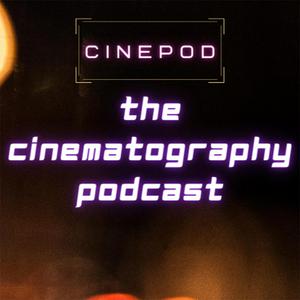
Hol dir die kostenlose radio.at App
- Sender und Podcasts favorisieren
- Streamen via Wifi oder Bluetooth
- Unterstützt Carplay & Android Auto
- viele weitere App Funktionen
Hol dir die kostenlose radio.at App
- Sender und Podcasts favorisieren
- Streamen via Wifi oder Bluetooth
- Unterstützt Carplay & Android Auto
- viele weitere App Funktionen


The Cinematography Podcast
Code scannen,
App laden,
loshören.
App laden,
loshören.

